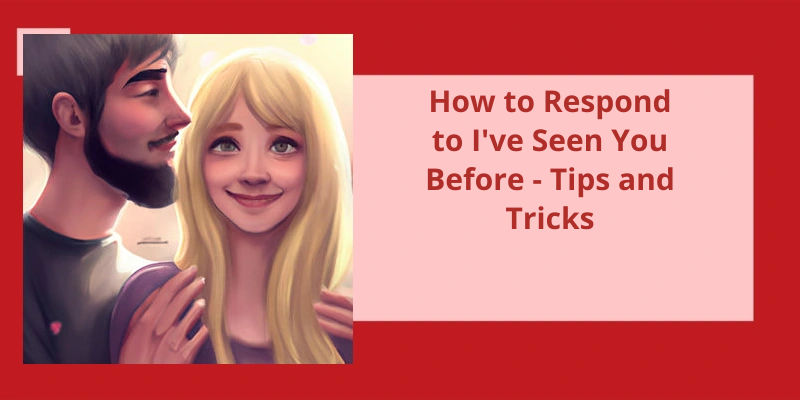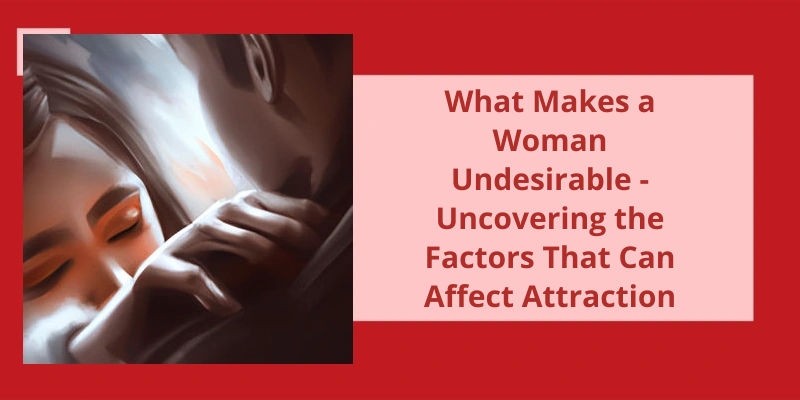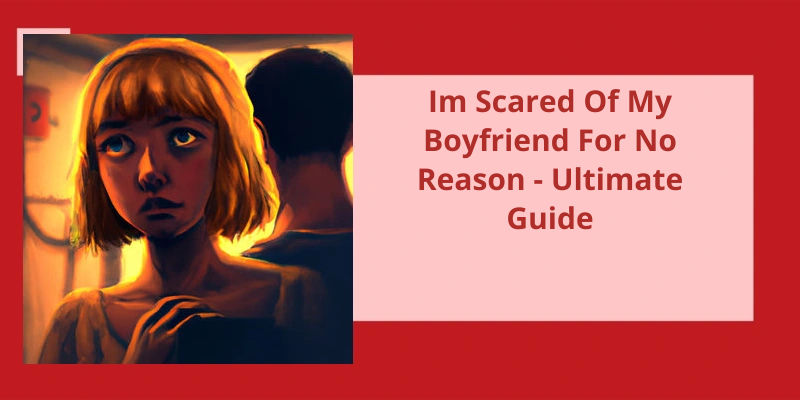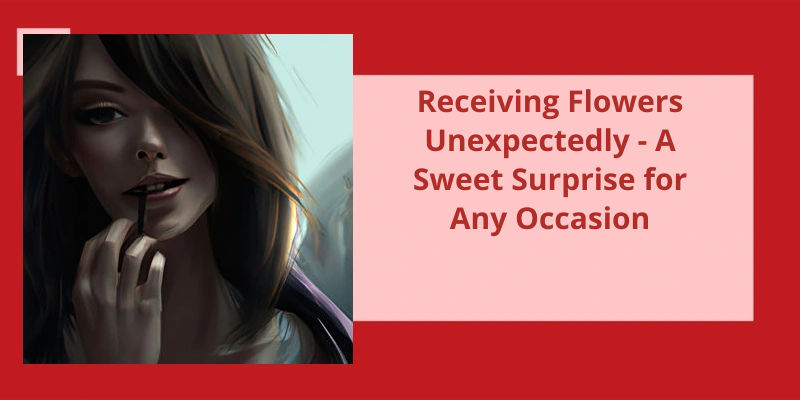As human beings, we often encounter situations where someone might approach us claiming to have seen us before, leaving us feeling confused and unsure of how to respond. While it’s understandable to feel a bit taken aback by such comments, it’s essential to understand that there are several possible reasons for the individual to have recognized you. It could be due to a prior encounter, mutual friends or acquaintances, or even from social media. The way in which you respond to this situation can make a significant impact on how you’re perceived. Therefore, it’s crucial to approach the situation with care and sensitivity. In this article, we will explore various ways in which you can respond to someone when they say, "I've seen you before" – taking into account different scenarios and factors that may be at play.
How Do You Respond to I See You?
However, when someone says “I see you”, the response can depend on the context and tone. If it’s said in a creepy or threatening way, it’s important to take it seriously and possibly take action to ensure your safety. If it’s said in a friendly or casual way, a simple “hello” or “hey there” can be an appropriate response.
In some cultures, “I see you” can be a traditional greeting that carries deeper meaning. In the Zulu culture of South Africa, “Sawubona” is used as a form of greeting that means “I see you, I acknowledge you, and I respect you”. In this case, responding with “Sikhona” which means “I’m here” can be a show of mutual respect and acknowledgement.
Additionally, “I see you” can also be used as a way of saying “I understand” or “I empathize”. In this case, the response could be something like “Thank you for seeing me” or “I appreciate you recognizing my perspective”. It’s important to pay attention to the tone and context of the conversation in order to respond appropriately.
In situations where someone says “I see you” as a compliment, such as acknowledging an accomplishment or achievement, a gracious response might be “Thank you, I worked hard for it” or “I appreciate you recognizing my hard work”. It’s important to accept compliments graciously while also acknowledging the hard work that went into the achievement.
In some cases, it can be a simple exchange of greetings or a deeper acknowledgement of mutual respect, and in others, it can require a more thoughtful response.
Language is an incredible tool that we use to communicate with one another, and sometimes even small nuances in phrasing can make all the difference in how a message is received. When it comes to expressing recognition of someone we’ve met before, there’s a specific way to phrase it in English to convey the most accurate meaning. Let’s explore why “I’ve seen you” is the appropriate choice, rather than “I saw you”.
How Do You Say I Have Seen You Before?
When you want to let someone know that you’ve seen them before, it’s important to use the proper grammatical construction. Simply saying “I saw you” isn’t going to convey the intended meaning. Instead, you should use the present perfect tense and say “I’ve seen you.”. The present perfect tense indicates that the action of seeing the person has occurred at an unspecified time in the past, but has some relevance to the present moment.
If you’re unsure whether you’ve seen someone before, it’s best to err on the side of caution and avoid making any assumptions. Rather than saying “I’ve seen you before,” you could ask a question such as “Have we met before?” or “Do you look familiar to me?”
In some cultures or social situations, it may be more appropriate to use a different phrase or gesture to acknowledge that you’ve seen someone before. For example, in Japan, it’s customary to bow slightly and say “otsukaresama desu” (roughly translated as “thank you for your hard work”) when encountering someone you’ve seen before. In other cultures, a simple nod or wave may suffice.
Ultimately, the best way to say “I’ve seen you before” will depend on the specific context and your personal communication style. Whether you use words, gestures, or a combination of both, the important thing is to convey the intended message clearly and respectfully.
How to Politely Greet Someone You Have Seen Before in Different Cultures or Social Contexts
- In Japan, a common greeting is to bow slightly. The depth of the bow is determined by the context of the situation and one’s social status.
- In Spain, it’s common to greet someone with a kiss on each cheek, even if it’s a formal setting.
- In many African cultures, it’s customary to ask about a person’s health and well-being before beginning a conversation.
- In Thailand, the traditional greeting is called a “wai,” which consists of placing your palms together in front of your chest and bowing your head slightly.
- In India, a common greeting is “Namaste,” which involves placing your palms together in front of your chest and bowing your head slightly while saying the word.
- In the United States, a handshake is a common, formal greeting. It’s important to make eye contact and smile while shaking hands.
- In France, a handshake is also a common formal greeting, but it’s also common to give a light kiss on each cheek as a greeting among friends and family.
- In Turkey, it’s customary to offer tea or coffee as a way of greeting someone. This drink is often shared and used as a way to bond with others.
- In China, a common traditional greeting is the “nǐ hǎo,” which means “hello” in Mandarin Chinese.
- In Brazil, it’s common to give a warm hug as a greeting, regardless of the formality of the situation.
So next time you bid farewell to someone with a “see you later,” remember that there are a variety of ways to respond. It’s all about finding the right tone and fitting reply for the situation. Let’s explore some options.
What Should I Reply After See You Later?
Another option is to acknowledge the sentiment behind the “see you later” and respond accordingly. For example, if the person you’re speaking with says “see you later” with a smile, you can respond with a smile and say “looking forward to it”. This shows that you appreciate their intention to meet again in the future.
For example, if you were talking about a movie that you both enjoyed, you can say “Cant wait to discuss that movie with you”. This not only acknowledges the “see you later”, but also keeps the conversation going.
If you’re in a formal setting, such as a business meeting, it’s appropriate to simply say “thank you” or “have a good day” in response to “see you later”. This maintains an air of professionalism while still acknowledging the other persons departure.
In a more casual setting, you can respond with a playful comment. For example, if you were joking around with the other person, you can say “Try not to miss me too much” or “Dont do anything I wouldnt do”. This light-hearted response can help maintain the mood, especially if you’ll be seeing each other again soon.
Whether it’s a simple “bye” or a more personalized comment, the important thing is to acknowledge the sentiment behind the farewell and leave the conversation on a positive note.
Now that we know how to respond to someone who says “long time no see,” let’s dive deeper into the nuances of communication through texting.
How Do You Respond When Someone Texts You Long Time No See?
When someone texts you “long time no see,” it’s important to respond empathetically and warmly. It’s possible that the person youre communicating with has been going through a tough time or has simply lost touch with you due to a busy schedule. In either case, responding with sensitivity can help to strengthen your relationship and build trust between you.
Let them know that you recognize that it’s been a while since youve seen each other, and that youre interested in reconnecting. This can help to demonstrate that you value the other person and the connection you’ve with them.
Another good way to respond to a “long time no see” text is to focus on the positive aspects of the relationship between you. You might mention a specific shared memory or experience that you enjoyed together in the past, and express a desire to create new memories in the future. This can help to build enthusiasm and excitement for future interactions, and can help to rekindle the friendship or connection between you.
It can also be helpful to ask the other person how theyve been and what theyve been up to since you last saw each other. This can give you valuable information about their current life situation, and can help you to better understand their perspective and needs. Additionally, it can show that youre interested in their well-being and value them as a person.
Avoid making assumptions or judgments about the other persons intentions or motivations, and try to maintain an open and curious mindset. Remember that everyone has their own unique journey and experiences, and that staying in touch with friends and loved ones can help to enrich your own life as well.
Whether you choose to express your excitement to reconnect with the other person or simply listen to their story and offer support, there are many ways to make a positive impact on the lives of those around you. So next time you receive a “long time no see” text, take a deep breath, consider your words carefully, and respond with intention and heart.
Tips on How to Make Plans for Reconnecting With the Person, Such as Suggesting a Specific Time and Place to Meet Up
When making plans to reconnect with someone, it’s important to be specific. Suggest a particular time, date, and location for meeting up. This will indicate to the person that you’re serious about reconnecting and will make it easier for you both to follow through on the plan. Being vague or indecisive can make the other person feel like you’re not committed to the reunion.
Source: How do we respond if someone says “long time no see”?..
Conclusion
It's important to remember that this statement doesn't necessarily mean that you've done something wrong or that the person in question has a negative opinion of you. Instead of dwelling on the possible implications of this comment, it's best to take it in stride and respond calmly and confidently. Some ways to do this might include asking the person where they think they saw you, acknowledging that you might have crossed paths in the past, or simply thanking them for bringing it to your attention. By approaching the situation with openness and positivity, you can turn an awkward moment into an opportunity for connection and understanding.






